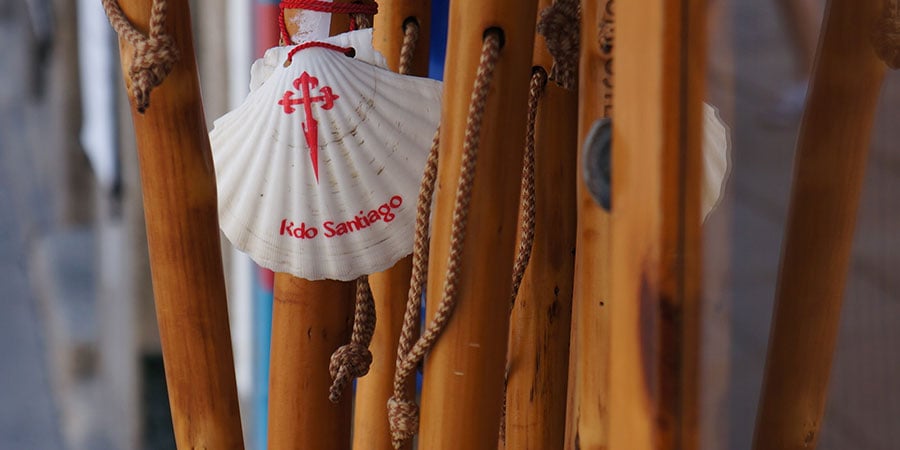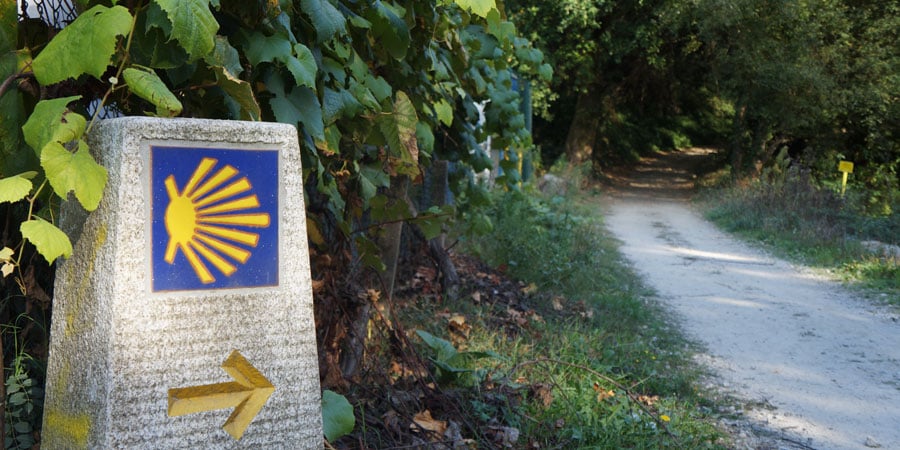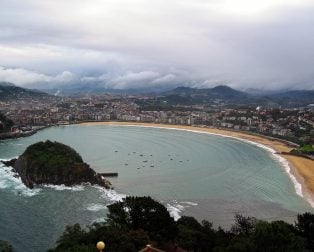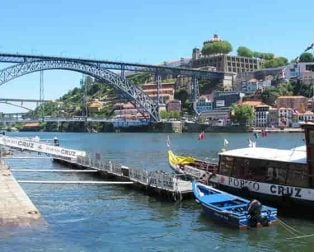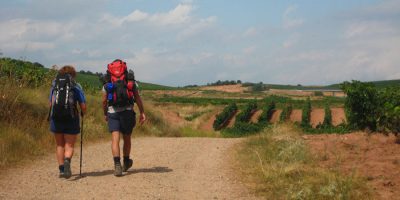The scallop shell is one of the most iconic symbols of the Camino de Santiago. Today, it is used, along with the yellow arrow, to guide pilgrims heading to Santiago de Compostela along its many different Camino routes.
Painted on trees, sidewalks, tiles, etc… the scallop shell (or ‘Vieira’ in Galician and Spanish) will help you find your way to Santiago de Compostela.
WHERE DID THE SCALLOP SHELL COME FROM?
Many stories, legends, and myths are trying to explain the ancient link between the scallop shell and the Camino de Santiago (Way of St. James).
It is no coincidence that in French, the scallop is called Coquille Saint Jacques, while in German, scallops are called ‘Jakobsmuscheln’ (James mussels).
WHY IS THE SCALLOP SHELL IMPORTANT TO PILGRIMS?
The shell is a metaphor, its lines representing the different routes pilgrims travel from all over the world, all walking trails leading to one point: the tomb of Saint James in Santiago de Compostela. However, it is open to interpretation. Which side points to Santiago?
In some regions, the scallop’s longest line is considered the one pointing towards Santiago de Compostela. This is the case in Asturias, for example, if you are walking the Camino Primitivo, the Camino del Norte, and some parts of the Camino Portugues.
But don’t let this fact confuse you, take the scallop shell as a symbol of the Camino, reassuring you that you are on the right path!
The scallops are usually placed next to a yellow arrow, so always follow the Yellow Arrows (no confusion here!), as they are the most accurate ‘road signs. For example, it is on the famous Camino Frances or the coastal Camino Portugues in Galicia.
Medieval pilgrims often wore scallop shells attached to their cloaks or hats during their journey to Santiago.
More than just a symbol or a pilgrim badge, the scallop shells also had a practical purpose: they were a handy and light replacement for a bowl so the pilgrims could use them to hold their food and drink on their long journey.
Pilgrims would also be given food at churches and other establishments, and a scallop shell scoop was the measure for the food they would be donated.
HOW IS THE SCALLOP SHELL USED TODAY?
Since the scallop is native to the coast of Galicia, the shell also became a memento, a physical proof of having completed the pilgrimage to Santiago (and quite often walked to or via Fisterra, on the Costa da Morte).
The shells could be picked up at the end of the journey in Fisterra but also became a popular souvenir and source of business for the shops near the Cathedral in Santiago and other establishments along the way.
Many legends are trying to source this old association of Saint James with the scallop shell: one of those legends says the apostle once rescued a knight covered in scallop shells. At the same time, a similar version of the same story explains that a knight’s horse fell into the water and emerged covered in scallop shells while the remains of Saint James were being taken from Jerusalem to Galicia.
There are also many stories about the scallop shell believed to have a much earlier origin, dating to pre-Christian times. It is understood that the Camino de Santiago had also become a kind of fertility pilgrimage, taken by couples needing help to have children. This could be related to the fact that the scallop shell might have originally been a pagan symbol of fertility.
The shape of the scallop shell also resembles the setting sun, which would have been an important daily event, full of symbolism in pre-Christian societies. It is probably not just a coincidence that the Saint James Way is a journey to the West, finishing at the ‘end of the world’ (the name Fisterra – Finis Terrae) and the setting sun.
If you would like to talk to us more about interesting facts about any of the Camino routes, please get in touch with our travel specialists on the contact form below:
